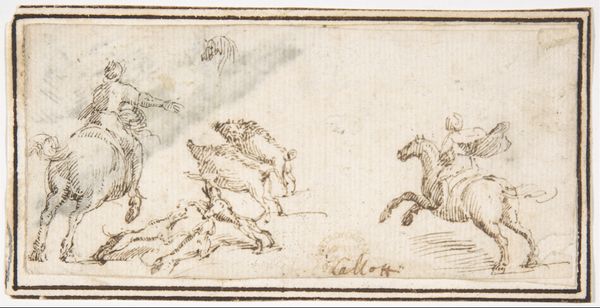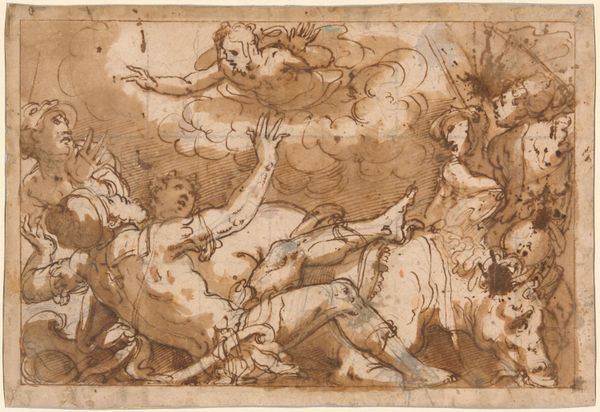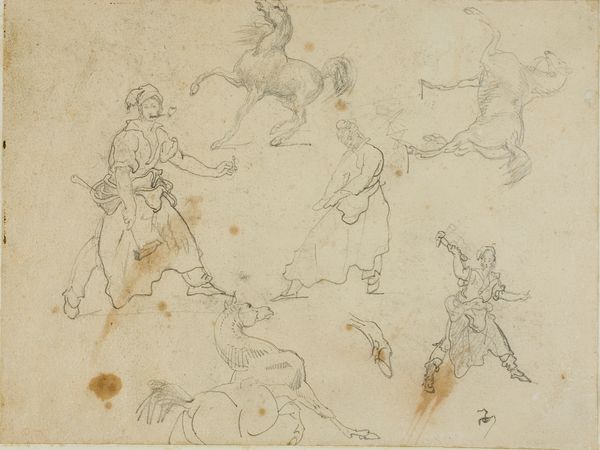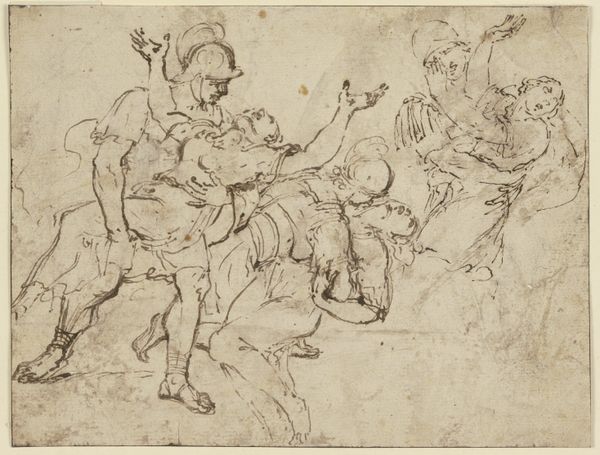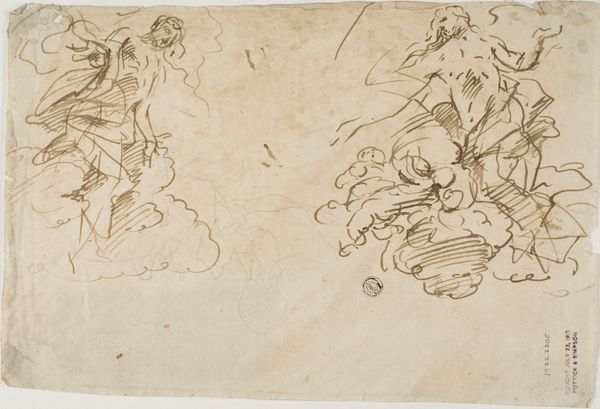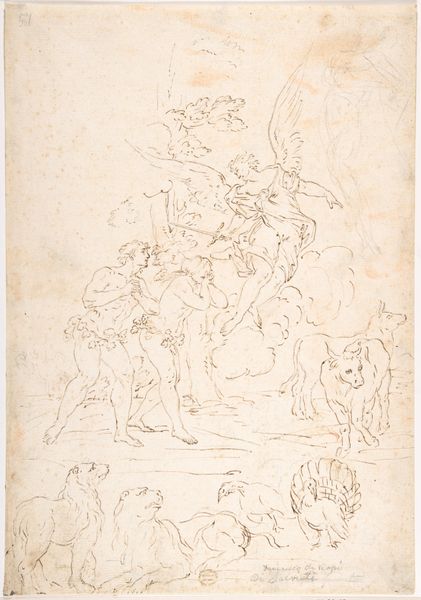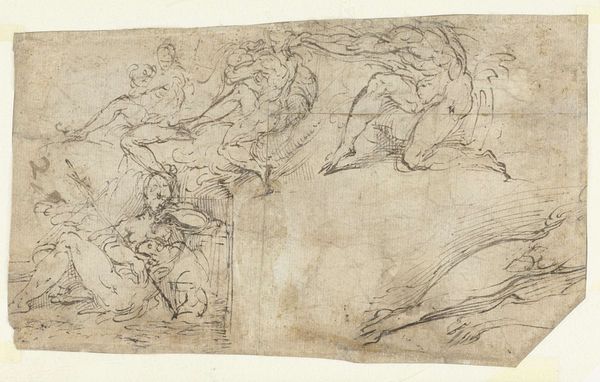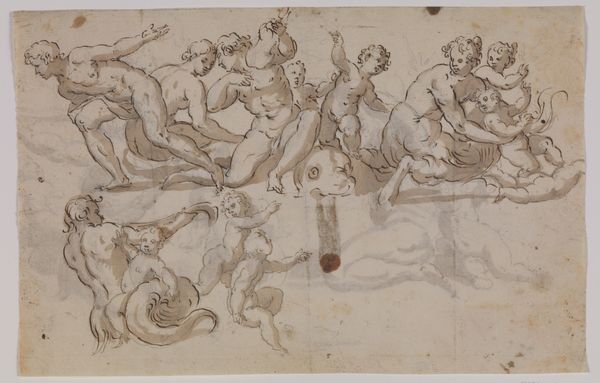
drawing, print, ink, pen
#
drawing
#
baroque
#
ink painting
# print
#
landscape
#
figuration
#
ink
#
ink drawing experimentation
#
soldier
#
horse
#
men
#
pen
#
genre-painting
#
history-painting
Dimensions: 4-3/4 x 7-1/4 in. (12.1 x 18.4 cm)
Copyright: Public Domain
Curator: Looking at "Cavalry Charge," created by Francesco Allegrini sometime between 1624 and 1663, the energy practically leaps off the page! It is a whirlwind of pen and brown ink over faint traces of graphite. What are your initial thoughts? Editor: Utter chaos! In the best way, though. It’s like watching a theatrical storm, all frantic scribbles and tumbling figures. Are they fighting, or just…falling? It’s magnificent! Curator: That sense of kinetic frenzy is precisely what makes it so compelling. Allegrini's use of dynamic, swirling lines certainly speaks to the drama of Baroque art. This approach also underscores the significance of militaristic conflict within the context of the 17th-century power struggles. Think of the Thirty Years' War looming. Editor: It makes me think about sketches, warm-ups for a larger piece...or maybe an urgent burst of creative energy. The loose lines! The raw feeling of motion, unpolished, almost brutal! This feels different than, say, the perfectly posed figures you usually get in history painting. Curator: That’s insightful. While ostensibly a history painting, it certainly verges into the genre painting tradition by capturing these more mundane, perhaps even unglorified aspects of battle. Allegrini employs the full spectrum of ink washes here too. It amplifies not just the chaotic swirl of combat, but also hints at the grime, fear, and brutal realities of 17th-century warfare. What stories can you pull from it? Editor: Hmm. Mostly it reminds me of playground skirmishes from childhood, all flailing limbs and whoops, magnified onto the grand stage. Except with horses. And probably much more real stakes than skinned knees. Does seeing this kind of conflict portrayed like this change our modern view of history painting? Curator: Absolutely. Approaching works such as Allegrini’s with a sensitivity to the historical moment alongside the contemporary theories on power helps us consider alternative narratives in canonical artwork. What's visible—violence—and what's elided: the suffering, the politics of war, and the uneven impact on society. Editor: Makes me want to go draw a really messy battle scene of my own, to get some of that raw energy flowing. You know, channel the spirit of chaotic brilliance... Curator: Perhaps that’s precisely the intention—to unleash our own creative, perhaps even activist, spirits. Art as a call to movement, wouldn't you say?
Comments
No comments
Be the first to comment and join the conversation on the ultimate creative platform.

